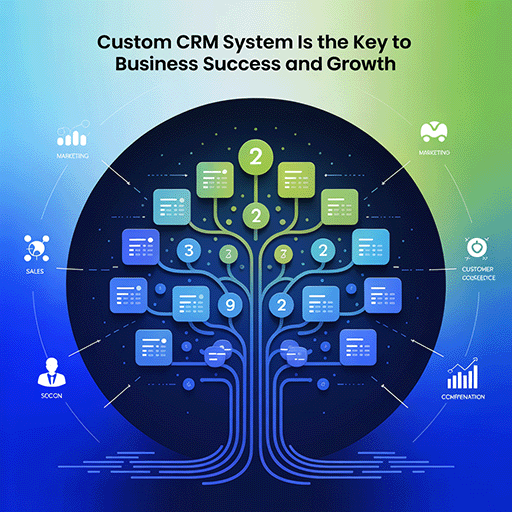The main difference between React Native and Swift lies in their approach to mobile app development. As the global app market is projected to reach $613 trillion by 2025, choosing the right framework is crucial for businesses aiming to deliver high-quality, user-centric applications. React Native offers cross-platform development, while Swift is optimized for native iOS apps.
This article provides a comprehensive analysis of React Native vs. Swift to guide your decision-making process and enhance development efficiency and performance.
Swift and React Native: Trends and Considerations
The mobile app market is a dynamic ecosystem constantly in flux. Understanding current trends and user demands is crucial for making informed decisions when choosing a development framework like React Native or Swift. Here’s a glimpse into the ever-changing landscape:
Soaring Demand for Mobile Applications
The appetite for mobile applications continues to surge. Businesses across industries recognize the immense potential of mobile solutions to engage customers, drive sales, and enhance brand loyalty. This translates into a growing need for skilled mobile app developers who can leverage the right frameworks to build innovative and user-centric applications.

Emerging Trends Shaping the Future
- Focus on User Experience (UX) and User Interface (UI): In today’s competitive market, intuitive and visually appealing UIs coupled with seamless UX are paramount. Users expect apps to be easy to navigate, responsive, and aesthetically pleasing. Both React Native and Swift offer tools and libraries to create exceptional user experiences, with React Native potentially having an edge in UI development due to its reusable component approach.
- Integration of Artificial Intelligence (AI) and Machine Learning (ML): AI and ML are revolutionizing the mobile app landscape. Imagine chatbots that provide personalized customer support or recommendation engines that curate content based on user preferences. Both React Native and Swift can be used to integrate AI and ML functionalities, opening doors for more intelligent and engaging apps.
- The Rise of Super Apps: These “super apps” encompass a vast array of functionalities within a single platform, offering everything from messaging and payments to ride-hailing and food delivery. React Native, with its cross-platform capabilities, might be better suited for developing such comprehensive applications.
- The Ascendancy of Augmented Reality (AR) and Virtual Reality (VR): AR and VR are blurring the lines between the physical and digital worlds. Imagine apps that allow users to try on clothes virtually or explore historic landmarks from their living rooms. While both React Native and Swift can be used for AR/VR development, Swift’s tight integration with Apple’s ARKit framework might offer an advantage to Swift over React Native in the battle of Swift vs React Native for iOS-specific AR applications.

Important Aspects Affecting Mobile App Development Price
- Project Complexity: The more intricate the app’s features and functionalities, the higher the development cost. Complex animations, real-time interactions, and extensive backend integrations will naturally require more development time and resources, impacting the overall price.
- App Size and Platform: Larger, more feature-rich apps will generally cost more to develop compared to simpler apps. Additionally, building separate native apps for both iOS and Android will be more expensive than a single codebase approach offered by React Native.
- Developer Rates and Location: Developer rates can vary significantly depending on location and experience. Hiring highly skilled developers from established tech hubs will likely command a premium compared to outsourcing development to regions with lower developer rates.
- Third-Party Integrations and APIs: Many apps rely on third-party APIs and services. The cost of integrating and maintaining these integrations can add to the overall development price.
- Ongoing Maintenance and Updates: Keeping an app up-to-date with the latest security patches and features requires ongoing maintenance. Factoring in these costs is crucial for long-term budgeting.
If you want to calculate the cost of a project or a future app, use our calculator for precise estimates.
What Is React Native?
React Native has emerged as a game-changer in mobile app development, offering a powerful solution for businesses seeking to reach a broader audience across multiple platforms. Here’s a deep dive into its core functionalities and considerations:
React Native utilizes JavaScript, a widely used and versatile language, to build mobile apps that run seamlessly on both iOS and Android devices. This eliminates the need for separate codebases for each platform, streamlining development and significantly reducing time to market.
React Native fosters a more agile development process. Developers can write code once and deploy it across multiple platforms, significantly reducing development time and resources compared to building native apps from scratch.
While React Native has made significant strides in performance optimization, native apps built with Swift or Kotlin (Android’s primary language) still hold an edge in certain areas, particularly for applications requiring high responsiveness or complex user interactions with device features.
React Native Advantages and Disadvantages
| Feature | Pros | Cons |
| Development Approach | Cross-platform (iOS & Android with JavaScript) | |
| Development Speed | Reduced development time and cost | Potential performance limitations compared to native apps |
| Community & Support | Large and active community with abundant resources | Debugging challenges due to the abstraction layer |
| Learning Curve | Faster prototyping and iteration with hot reloading | Reliance on third-party libraries for functionality |
| Developer Availability | A large pool of developers with JavaScript knowledge | Limited access to some native APIs |
Understanding Swift
Swift, developed by Apple, has become the go-to language for building high-performance iOS applications. Here’s a comprehensive analysis of its key features, use cases, advantages, and potential drawbacks to guide your decision-making process.
Swift is designed explicitly for building high-performance apps that run exclusively on iOS devices (iPhones, iPads, Apple TVs). This allows for seamless integration with native functionalities and hardware features, unlocking the full potential of the Apple ecosystem.
As Apple’s primary programming language for iOS development, Swift enjoys extensive documentation, official libraries, and a wealth of resources from Apple itself.
Advantages and Disadvantages of Swift
| Feature | Pros | Cons |
| Development Approach | Native iOS development (Swift) | Single-platform focus (iOS only) |
| Performance | High-performance native apps | The steeper learning curve for beginners |
| Language & Security | Modern, secure, and efficient language | Limited reach compared to cross-platform solutions |
| Ecosystem & Support | Rich ecosystem and support from Apple | |
| Native Features | Seamless integration with native iOS features |
Key Factors to Consider When Choosing React Native vs Swift
Selecting the right framework for your mobile app development project is a critical decision that can significantly impact its success. Here’s a breakdown of key factors to weigh when deciding between React Native, the cross-platform powerhouse, and Swift, the native iOS champion:
1. Target Platforms:
- Cross-Platform vs. Native: Do you need your app to be available on both iOS and Android or is iOS your sole focus? React Native excels in cross-platform development, while Swift is exclusive to iOS.
- Long-Term Vision: Consider your future plans. If you envision expanding to Android, React Native might be a more strategic choice from the outset.
2. Development Team Expertise:
- JavaScript Proficiency: Does your development team primarily work with JavaScript? React Native leverages JavaScript, offering a smooth transition and potentially faster development.
- iOS Development Experience: Does your team have experience with Swift and the broader iOS development ecosystem? If so, Swift can be harnessed for optimal performance and native feature integration.
- Learning Curve: If your team is new to mobile development, React Native’s wider language pool (JavaScript) might offer a gentler learning curve compared to Swift.
3. Project Complexity and Performance Requirements:
- App Functionality: Does your app rely heavily on complex animations, real-time interactions, or high-performance graphics? Swift offers a slight edge in performance for demanding applications.
- Device Integration: Will your app require deep integration with specific iOS hardware features, like the camera or motion sensors? Swift provides seamless access to such functionalities.
4. Development Timeline and Budget:
- Time to Market: React Native’s cross-platform approach and code reusability can potentially lead to faster development times and app launch compared to building separate native apps.
- Development Cost: Consider the overall development cost, including developer availability and potential resource needs for each platform. React Native, with its larger talent pool, might offer a cost advantage for cross-platform development.
5. Long-Term Maintenance and Updates:
- Code Maintainability: React Native’s declarative style and use of JavaScript can enhance code readability and maintainability over time.
- Community Support: Both React Native and Swift boast large and active communities, offering valuable resources and support for ongoing maintenance and updates.
Additional Considerations:
- App Design Philosophy: React Native’s focus on reusable UI components might influence the overall design approach compared to building a fully native app with Swift.
- Future-Proofing: Consider the evolving mobile development landscape. While React Native is a mature and well-established framework, staying updated on technological advancements is essential.
When to Choose Swift
Swift shines brightest when crafting high-performance, feature-rich applications that leverage the full potential of the Apple ecosystem. Here are some real-world examples where Swift’s strengths make it the ideal choice:
- High-Performance Gaming Apps: Games like “Monument Valley 2” and “Genshin Impact” demand exceptional responsiveness and smooth visuals. Swift’s tight integration with Apple’s Metal graphics framework empowers developers to create visually stunning and immersive gaming experiences that leverage the full processing power of iOS devices.
- Complex Social Networking Apps: Instagram, Facebook, or Snapchat rely heavily on features like real-time updates, camera integration, and photo editing. Swift’s seamless access to native functionalities and hardware features like the camera allows developers to build robust and engaging social networking experiences.
- Finance and Trading Apps: Applications like Robinhood or Acorns require accuracy, speed, and security. Swift’s modern design and memory management features contribute to secure and reliable financial apps that users can trust with their sensitive data.
- Music Production and Editing Apps: GarageBand is a prime example. Swift’s ability to handle complex audio processing and integration with Core Audio frameworks empowers developers to create professional-grade music creation and editing tools that leverage the capabilities of iPhones and iPads.
- Augmented Reality (AR) Apps: Swift’s tight integration with Apple’s ARKit framework allows developers to build innovative AR experiences that seamlessly blend the digital and physical worlds. Imagine furniture placement apps like IKEA Place or AR learning tools that bring textbooks to life – these are all potential applications where Swift’s capabilities excel.

What Is React Native Used For?
React Native’s cross-platform prowess makes it a compelling choice for a variety of mobile app development projects. Here are some React Native examples that can propel your app ideas to success:
- Rapid Prototyping and MVP Development: Need to get a minimum viable product (MVP) into the hands of users quickly to validate your concept? React Native’s faster development cycles and code reusability allow for rapid prototyping and testing across both iOS and Android platforms. This can significantly accelerate your time-to-market and provide valuable user feedback early in the development process.
- Business and Productivity Apps: Think of apps like Evernote, Trello, or Asana. These applications prioritize functionality and a consistent user experience across platforms. React Native’s cross-platform development approach and large pool of JavaScript developers can streamline development and ensure a seamless user experience for both iOS and Android users.
- E-commerce and Retail Apps: Cross-platform availability is crucial for reaching a wider audience. React Native allows businesses to create feature-rich e-commerce apps like Shopify or Etsy that function flawlessly on both iOS and Android devices, potentially boosting sales and customer engagement.
- Limited Budget and Development Resources: React Native’s ability to build a single codebase for both platforms can be a game-changer for businesses with limited budgets and development resources. This approach can significantly reduce development costs compared to building separate native apps for each platform.
- Educational and Entertainment Apps: Language learning apps like Duolingo or entertainment apps like Netflix benefit from a wider user base. React Native facilitates cross-platform development, allowing users on both iOS and Android to enjoy these educational or entertainment experiences.
- Companies with Existing JavaScript Expertise: Does your development team already possess strong JavaScript skills? React Native leverages this existing knowledge, fostering a smoother learning curve and faster development process compared to learning entirely new languages like Swift or Kotlin (Android’s primary language).
Final Note
| Feature | React Native | Swift |
|---|---|---|
| Development Language | JavaScript | Swift |
| Platform Compatibility | Cross-platform (iOS & Android) | iOS only |
| Performance | Good, but may lag for complex animations | Excellent, native performance |
| Development Speed | Faster due to single codebase for both platforms | Slower, as it requires separate iOS development |
| User Interface | Uses native components, but custom UI requires more effort | Full access to native UI components |
| Community Support | Large and active community | Strong support from Apple and growing community |
| Access to Native APIs | Requires bridging with native code | Direct access, full use of iOS SDK |
| Learning Curve | Easier for web developers familiar with JavaScript | Easier for developers familiar with Apple’s ecosystem |
| Code Reusability | High, can share code between iOS and Android | Low, specific to iOS platform |
| Hot Reloading | Yes | No |
| Third-Party Libraries | Large ecosystem, many libraries available | Smaller ecosystem, but high-quality libraries |
| Maintenance | Easier with single codebase for both platforms | Requires separate maintenance for iOS |
| Best For | Startups, MVPs, and projects targeting multiple platforms quickly | High-performance apps, complex iOS-specific applications |
The battle for user attention within the mobile app arena is fierce. Selecting the most effective framework – React Native or Swift – is akin to choosing the right weapon for this digital battlefield.
LITSLINK, a leading mobile app development company, has a team of skilled and experienced developers proficient in React Native and Swift. We take pride in partnering with our clients to understand their unique needs and objectives.
Whether you envision a cross-platform app with React Native or a native iOS powerhouse, our team can guide you through the decision-making process, leverage the most suitable framework for your project, and deliver a high-quality mobile app that exceeds expectations.
Contact LITSLINK today for a consultation. Embark on your mobile app development journey with a trusted partner by your side!





